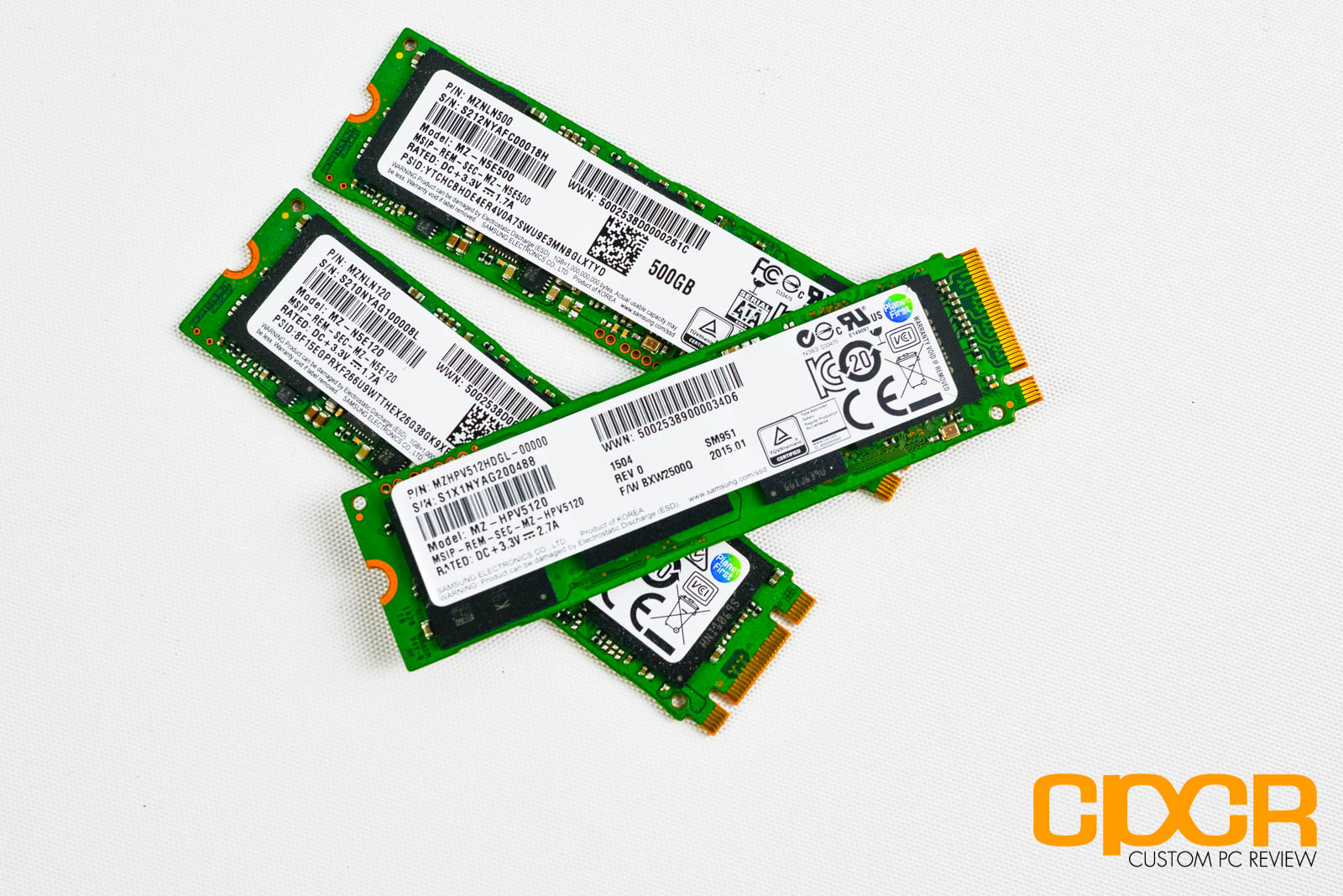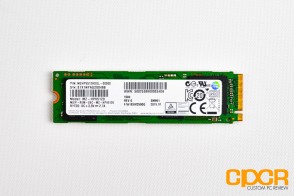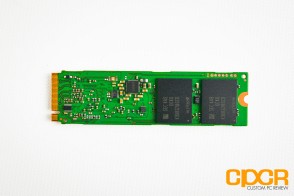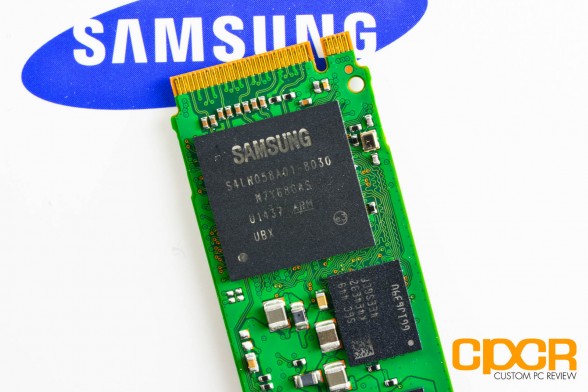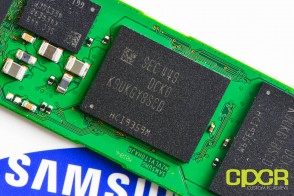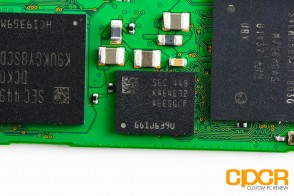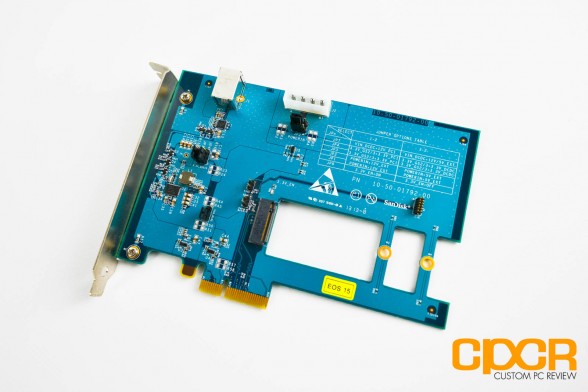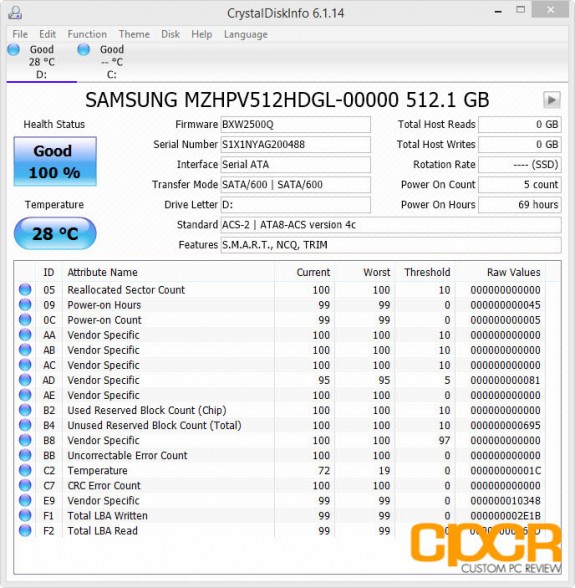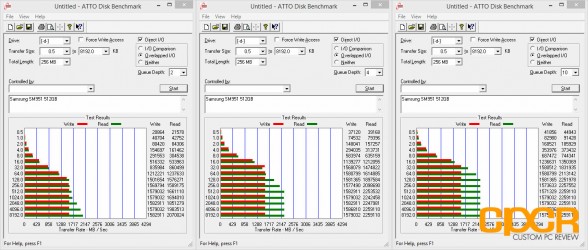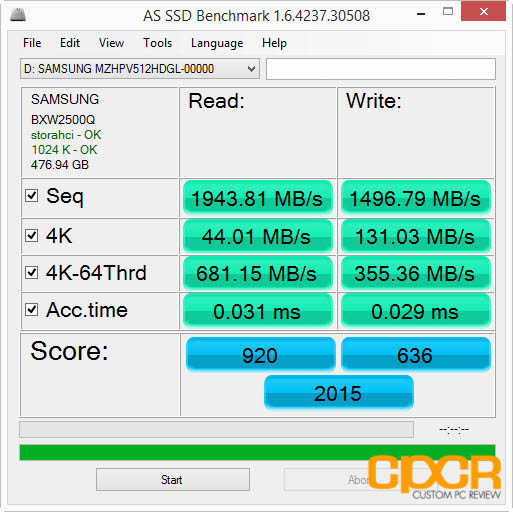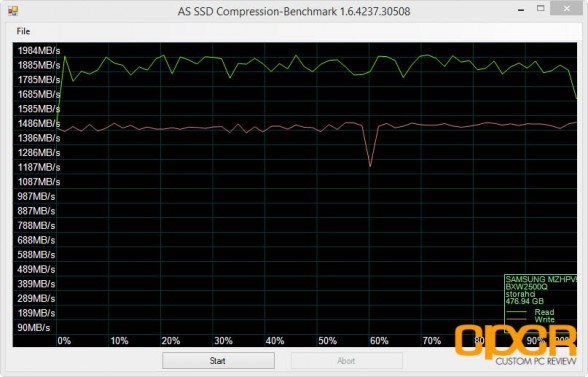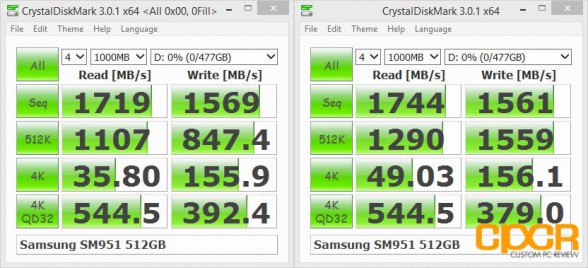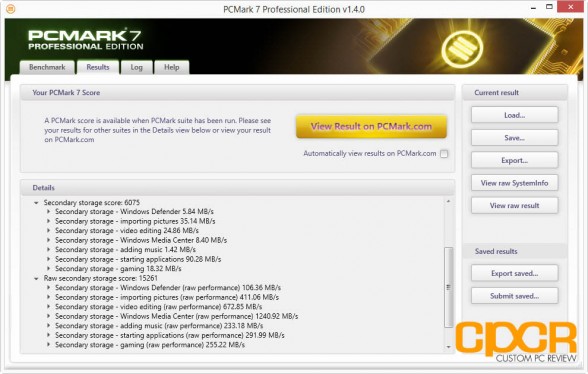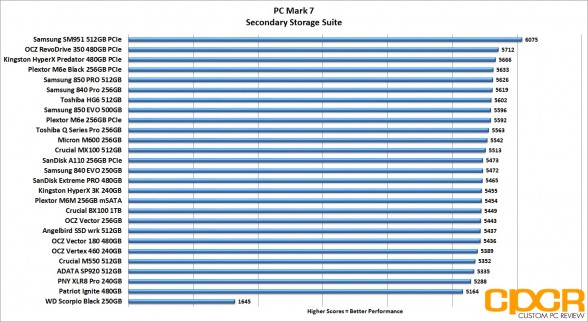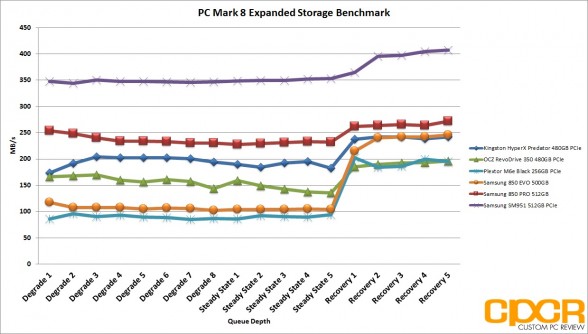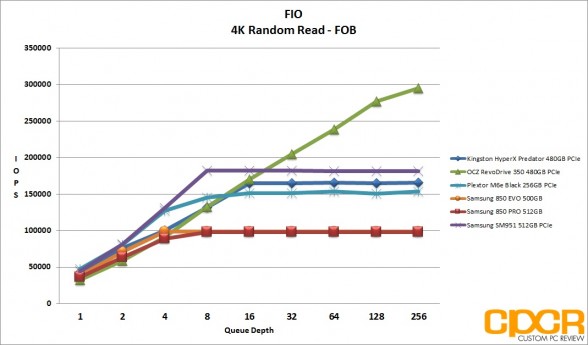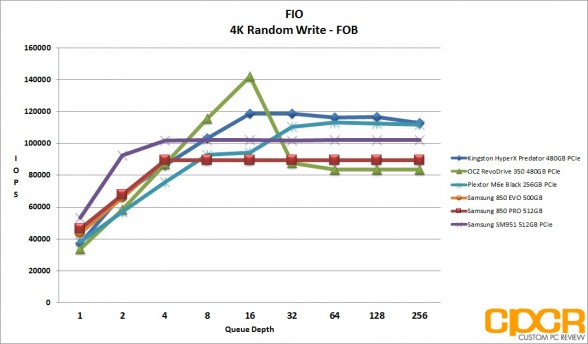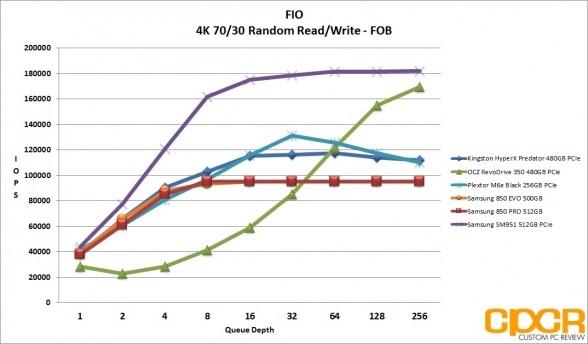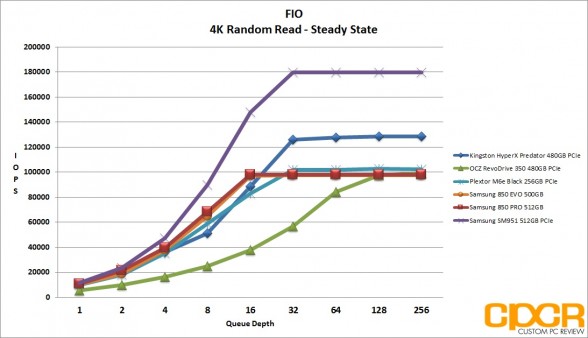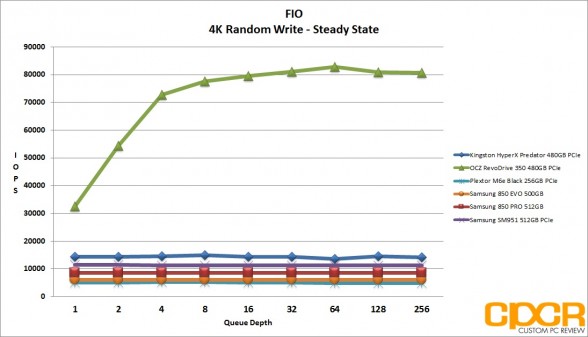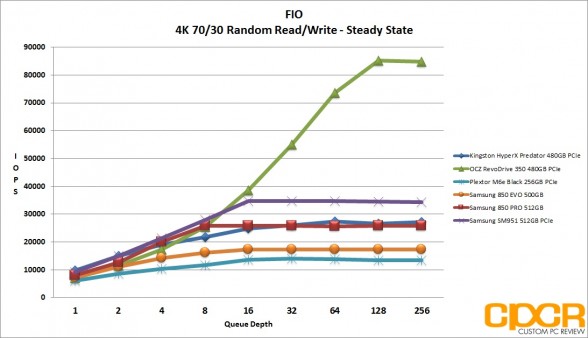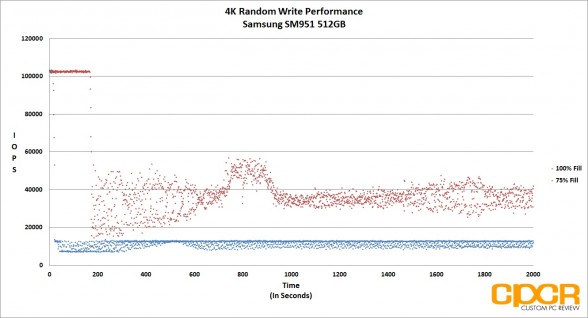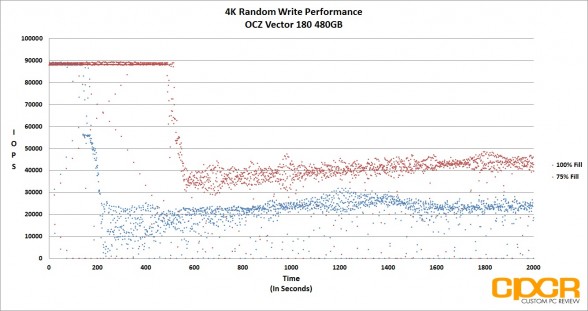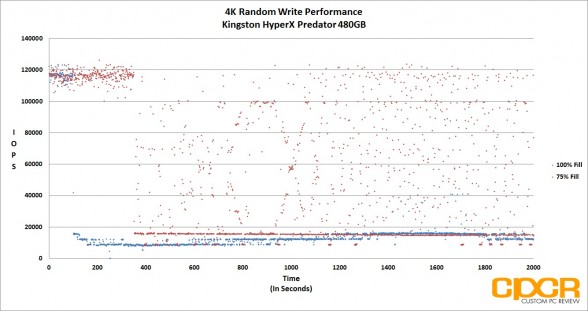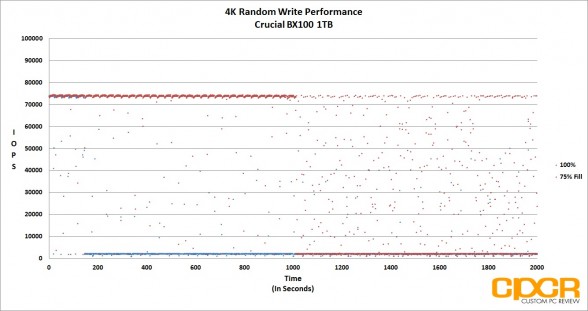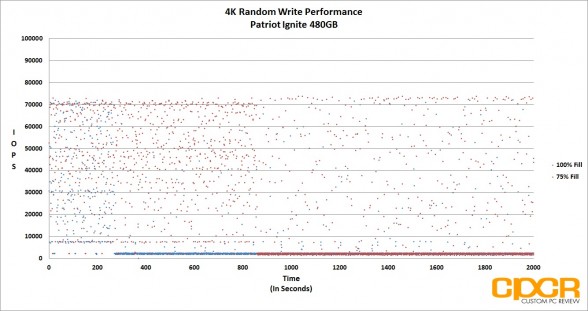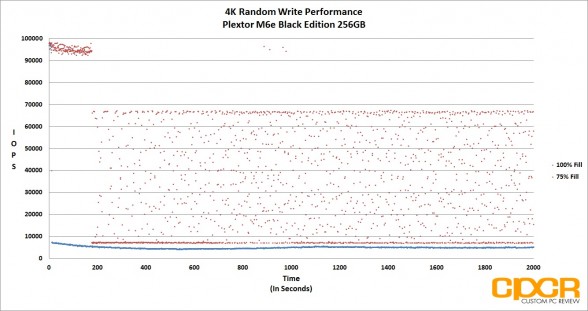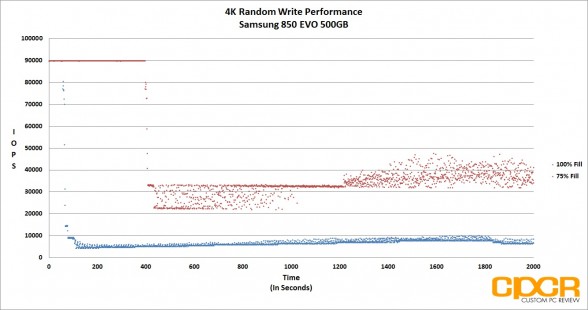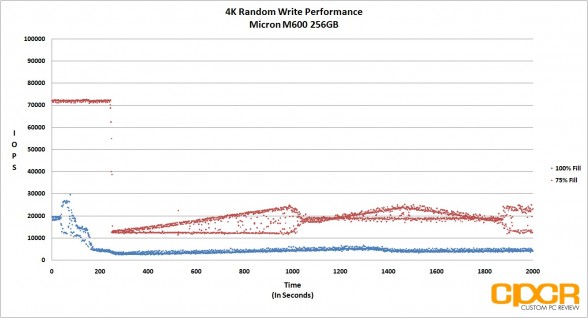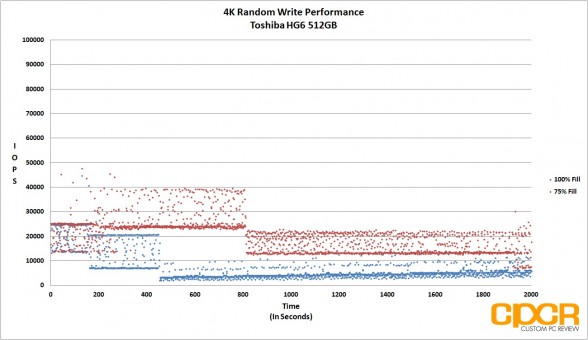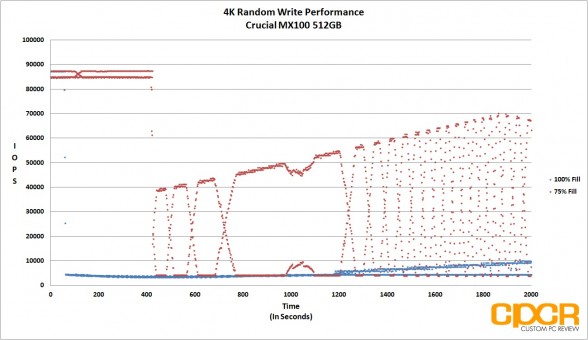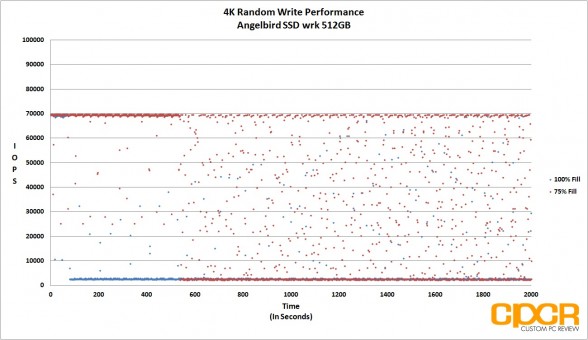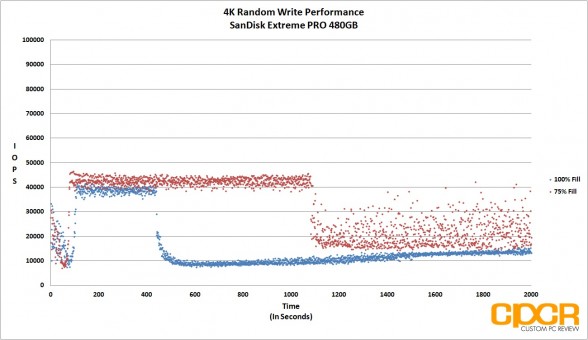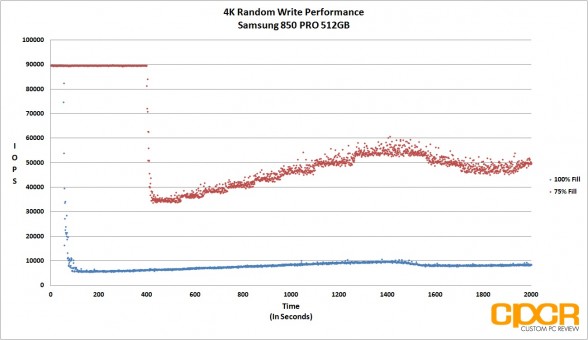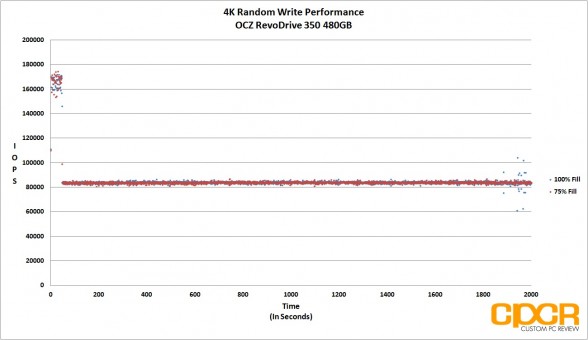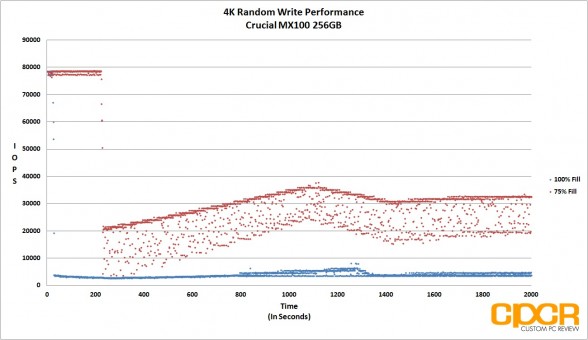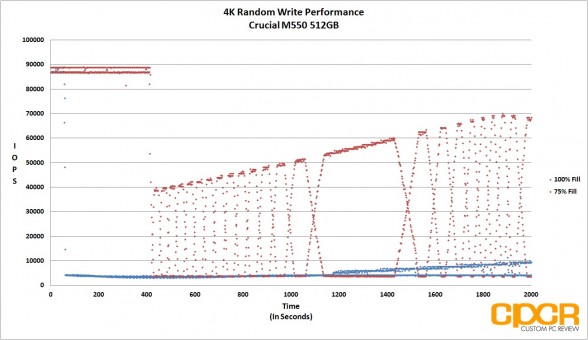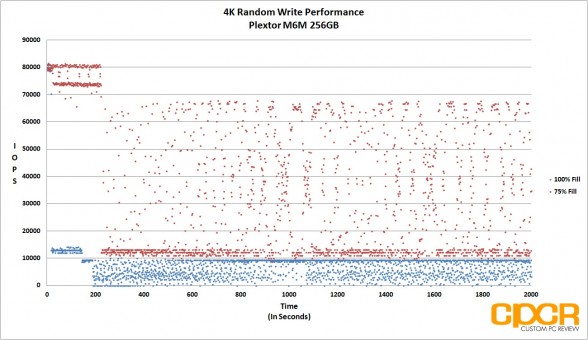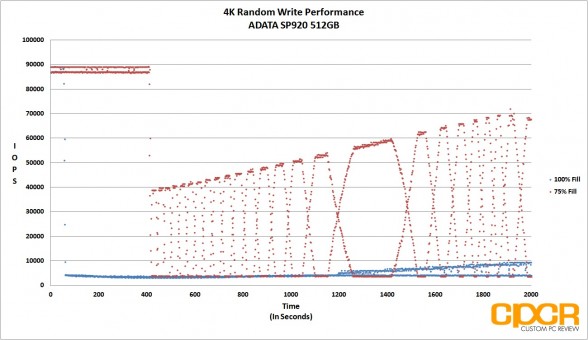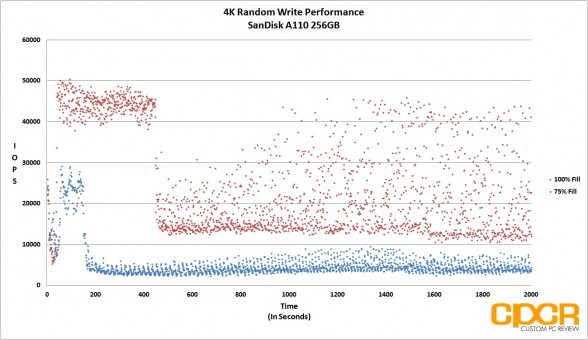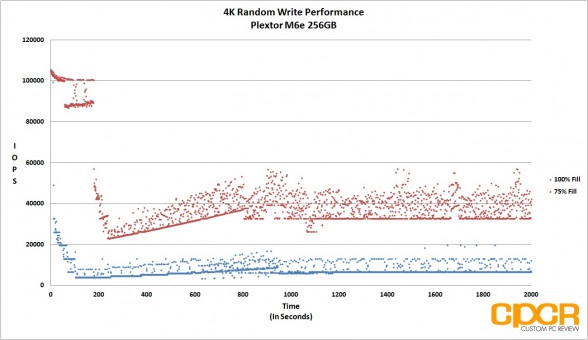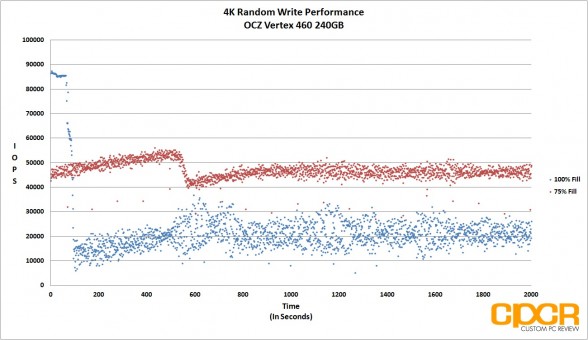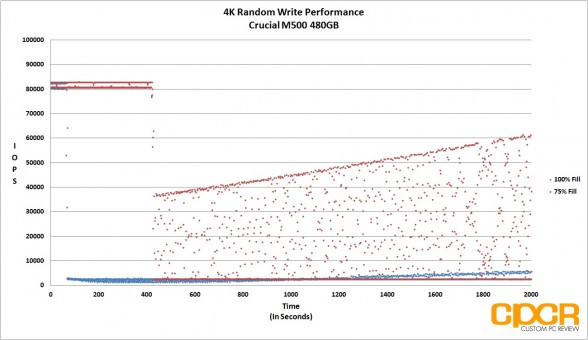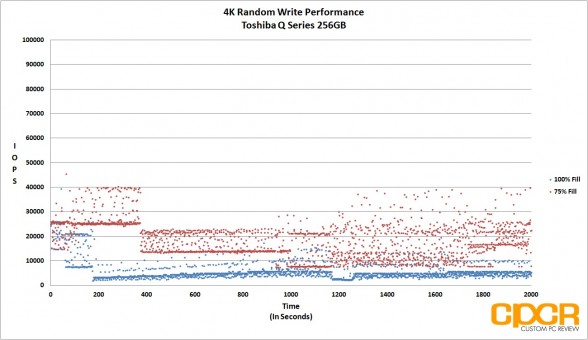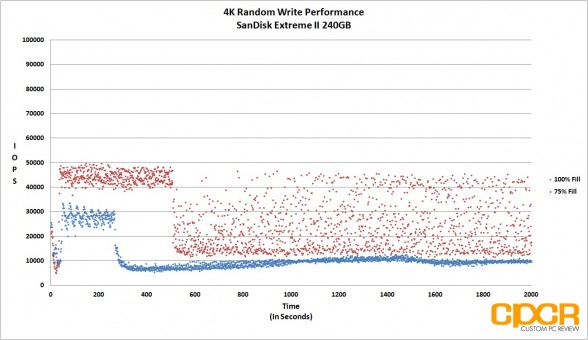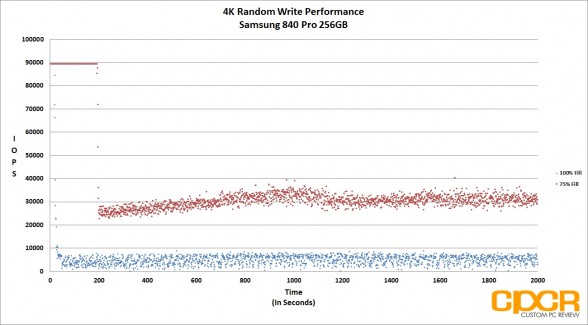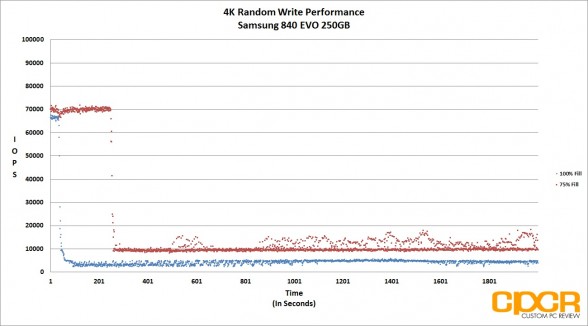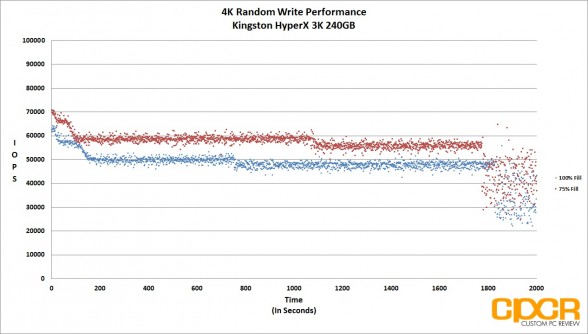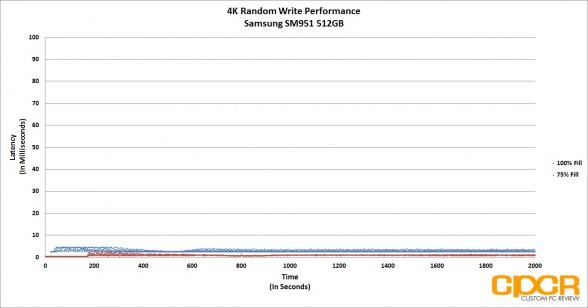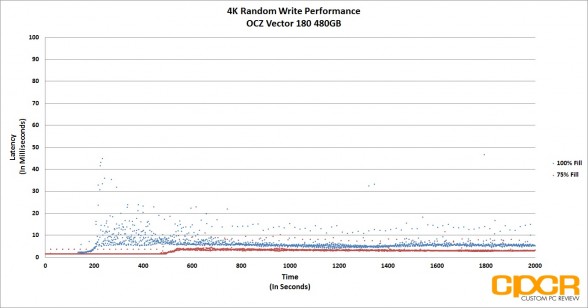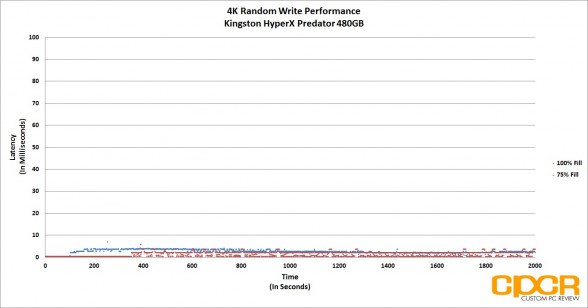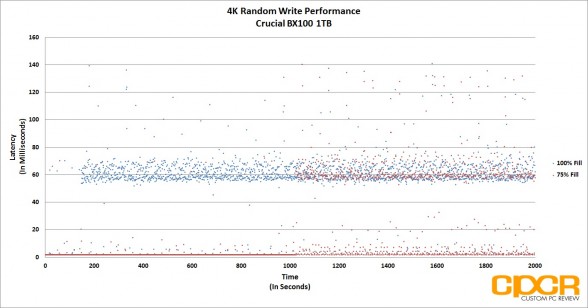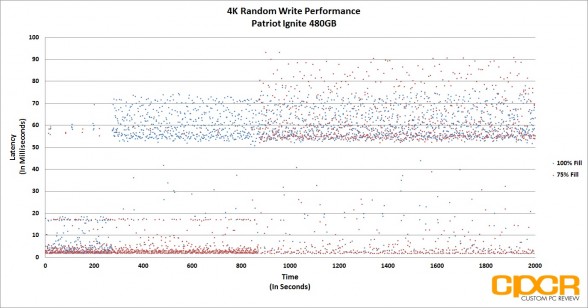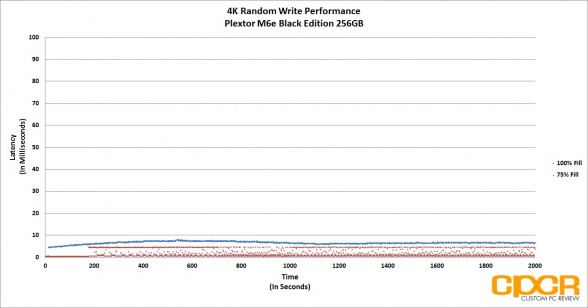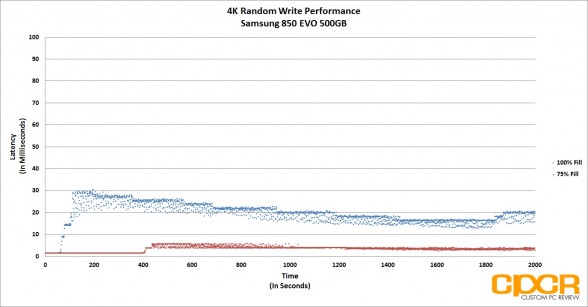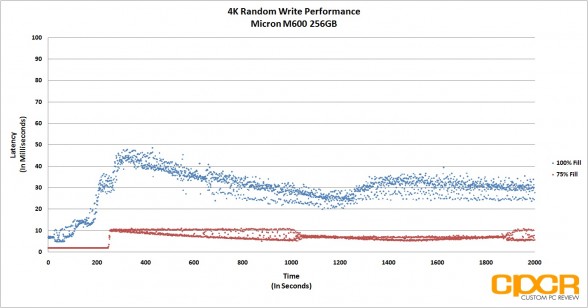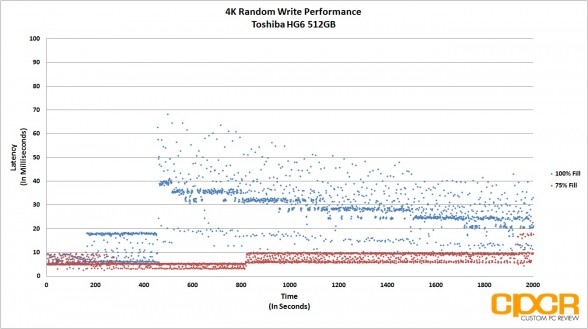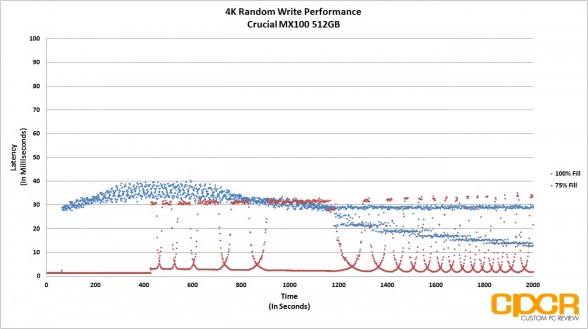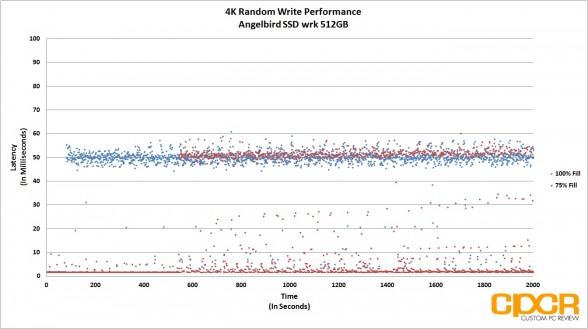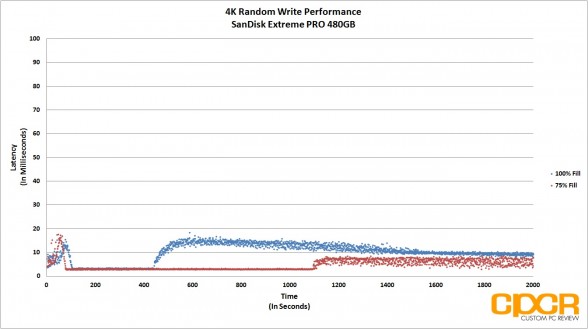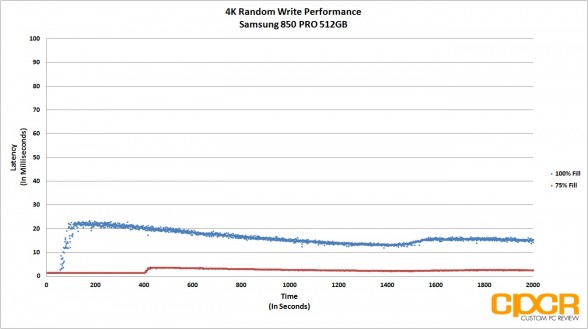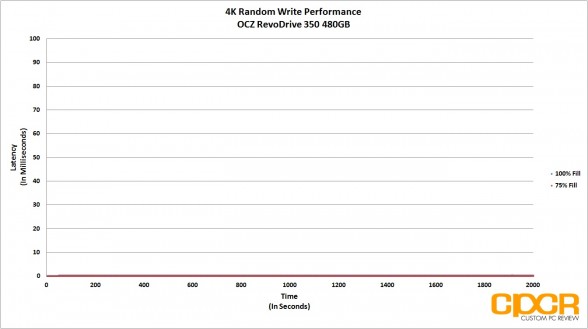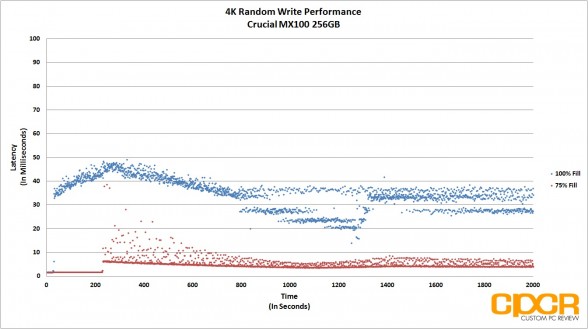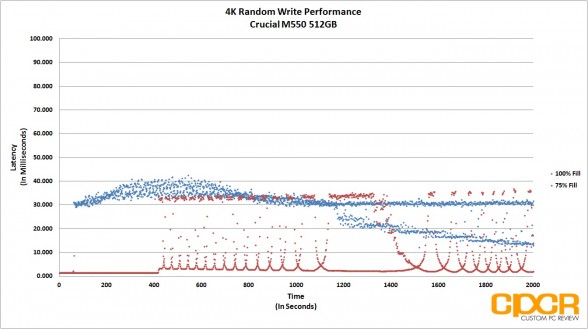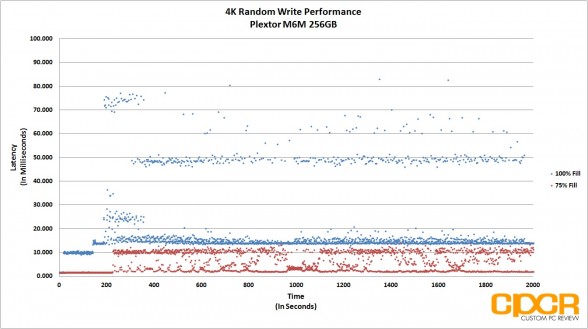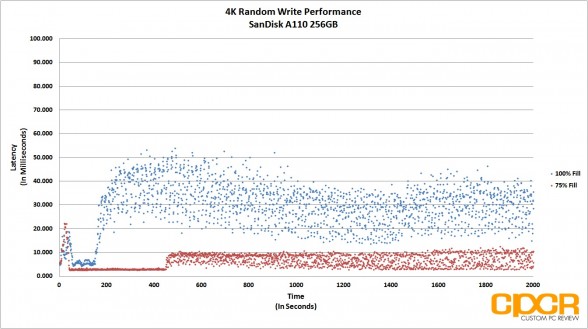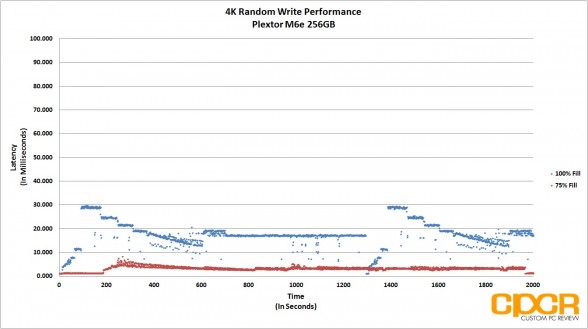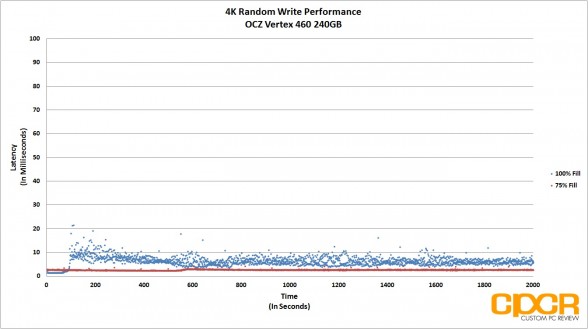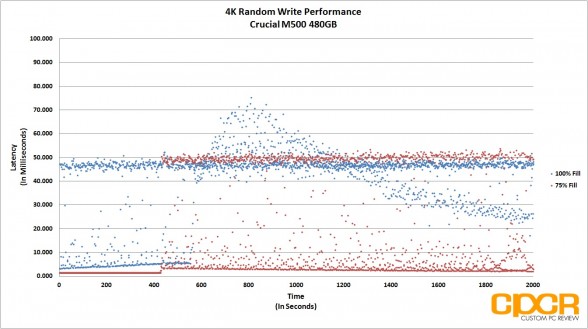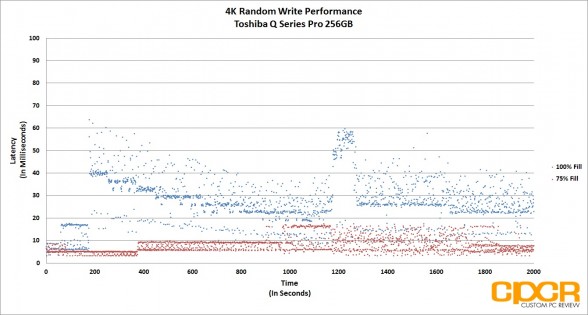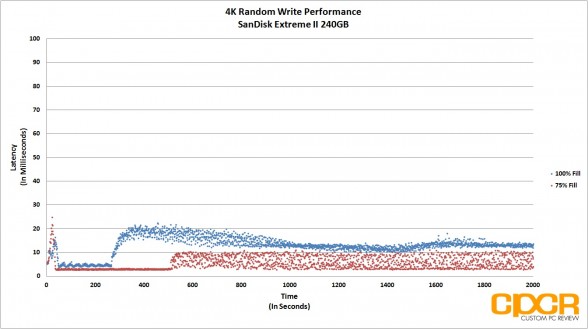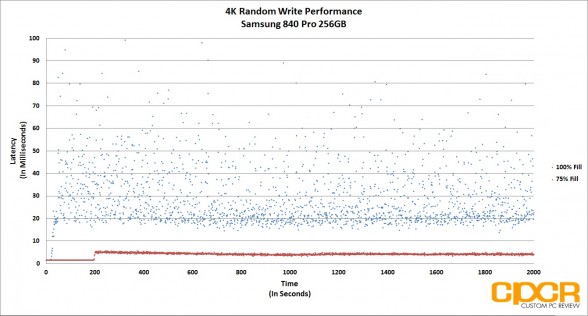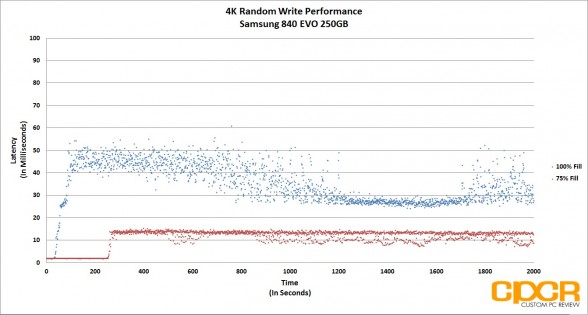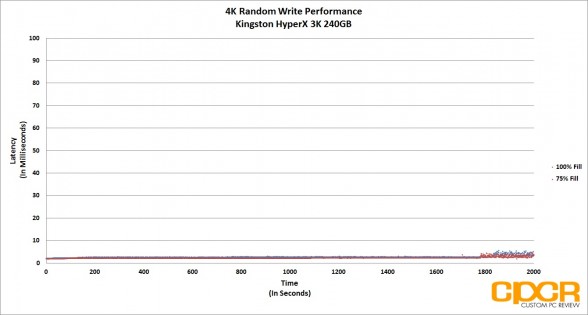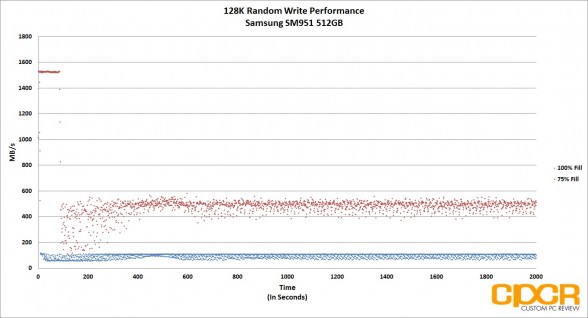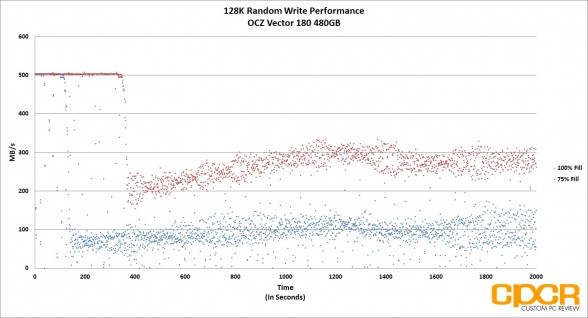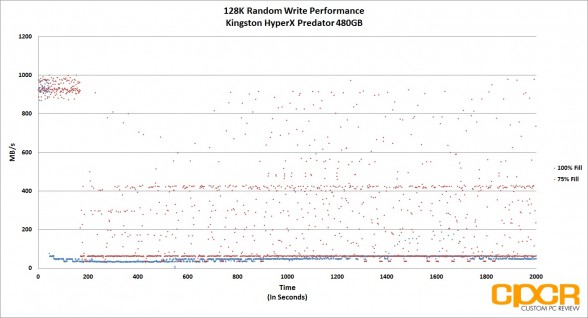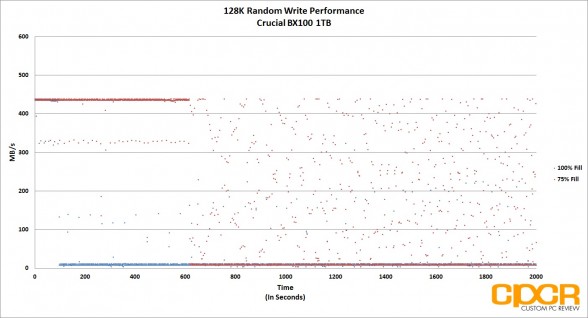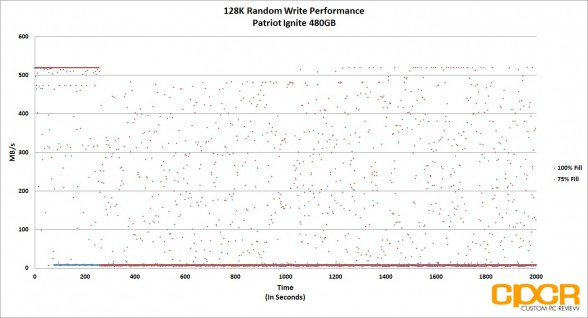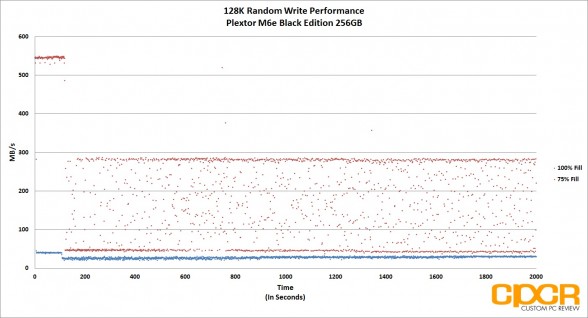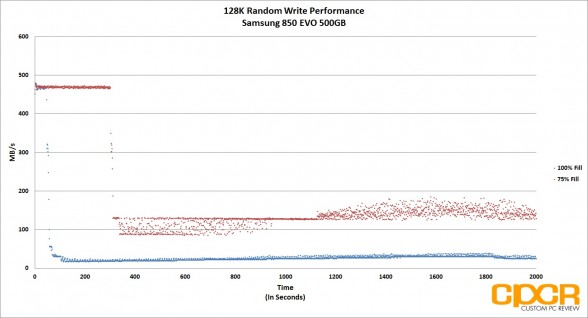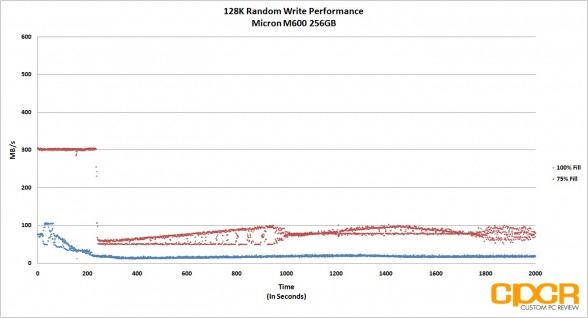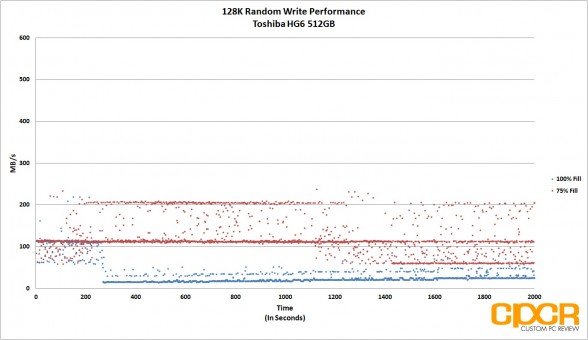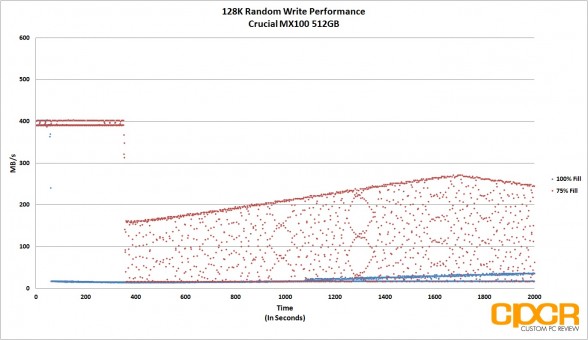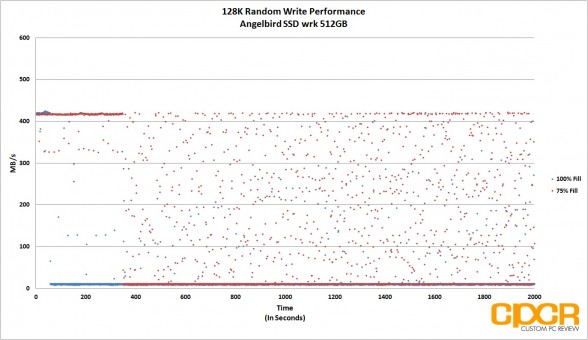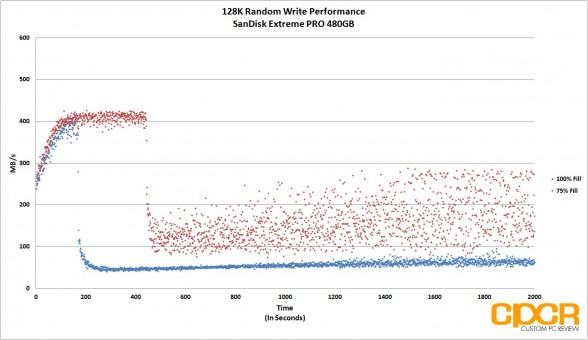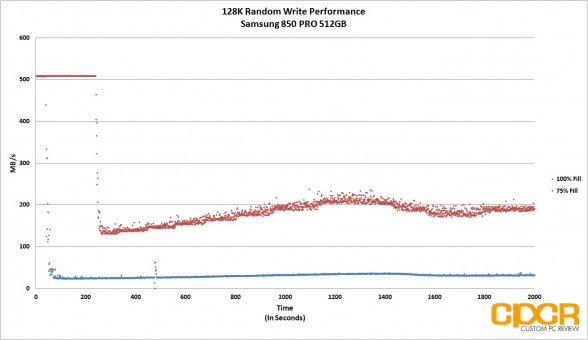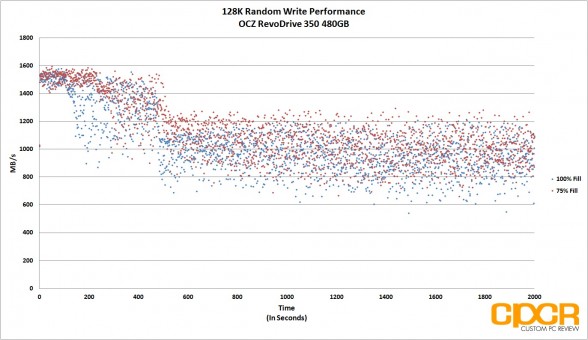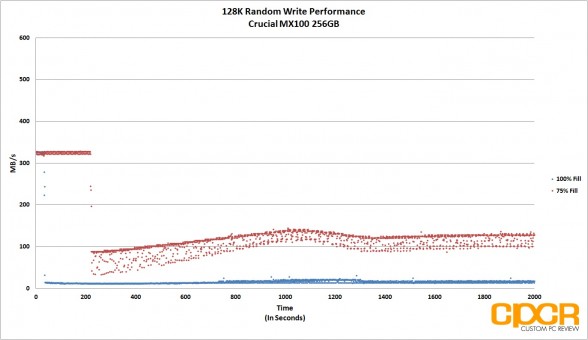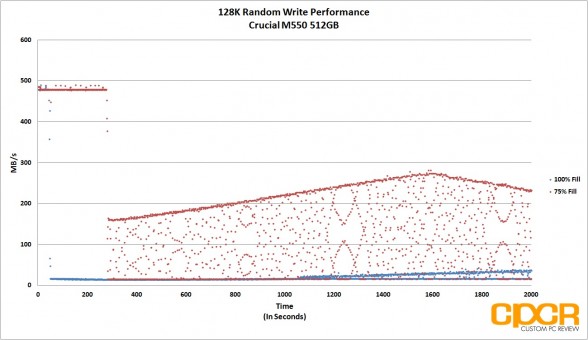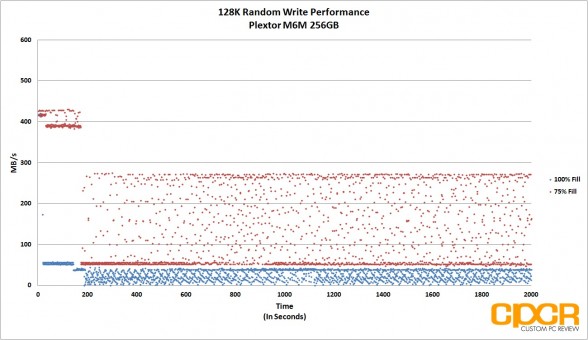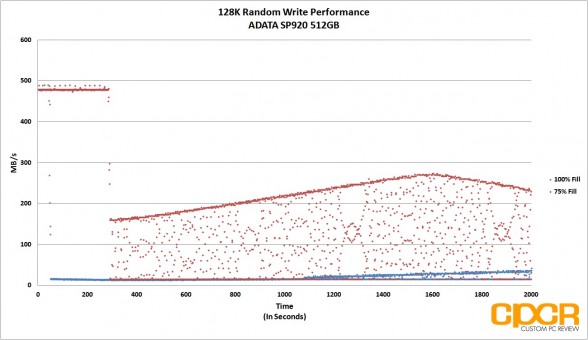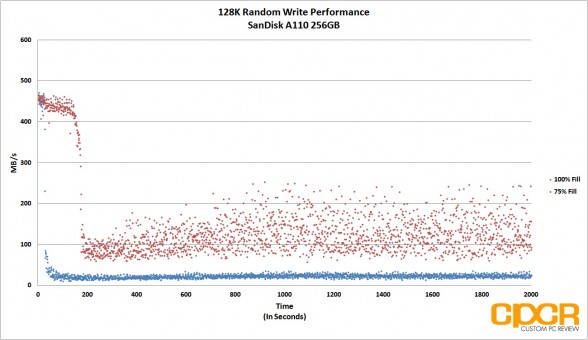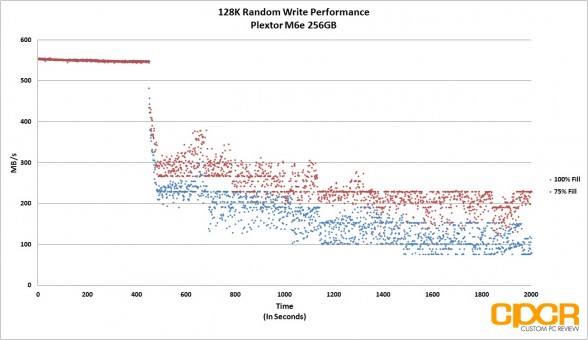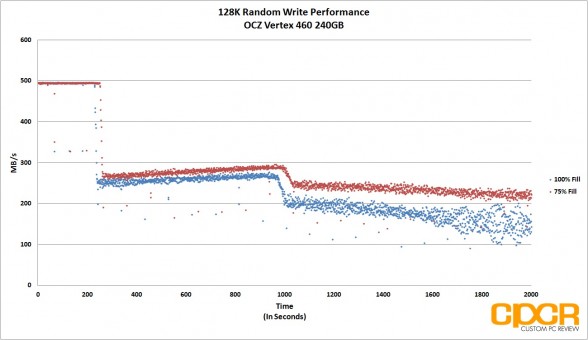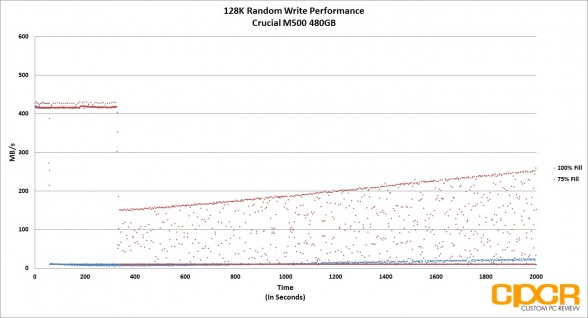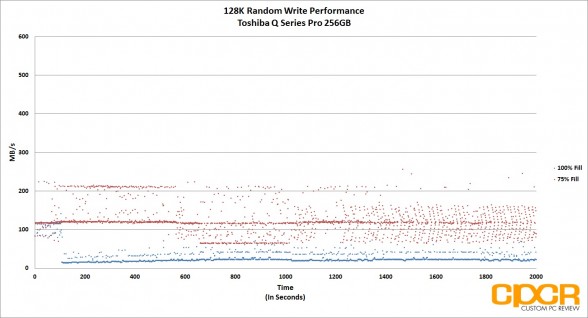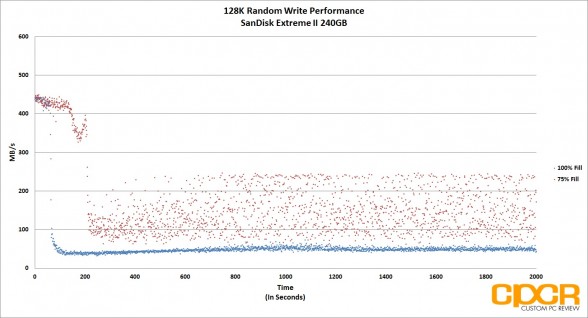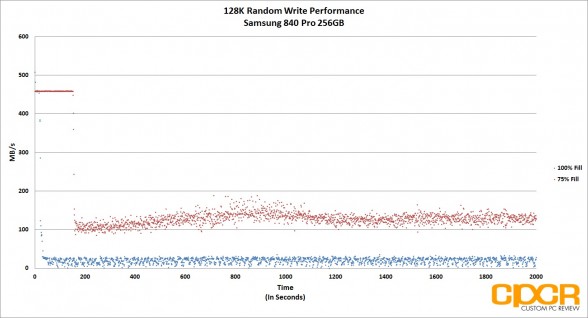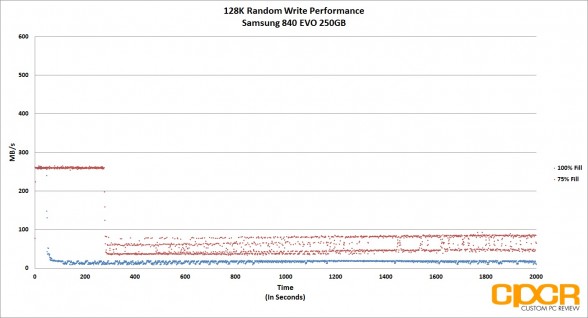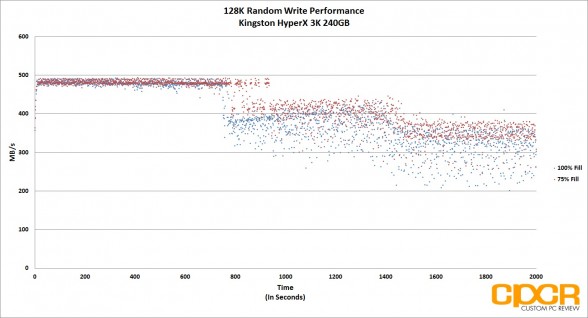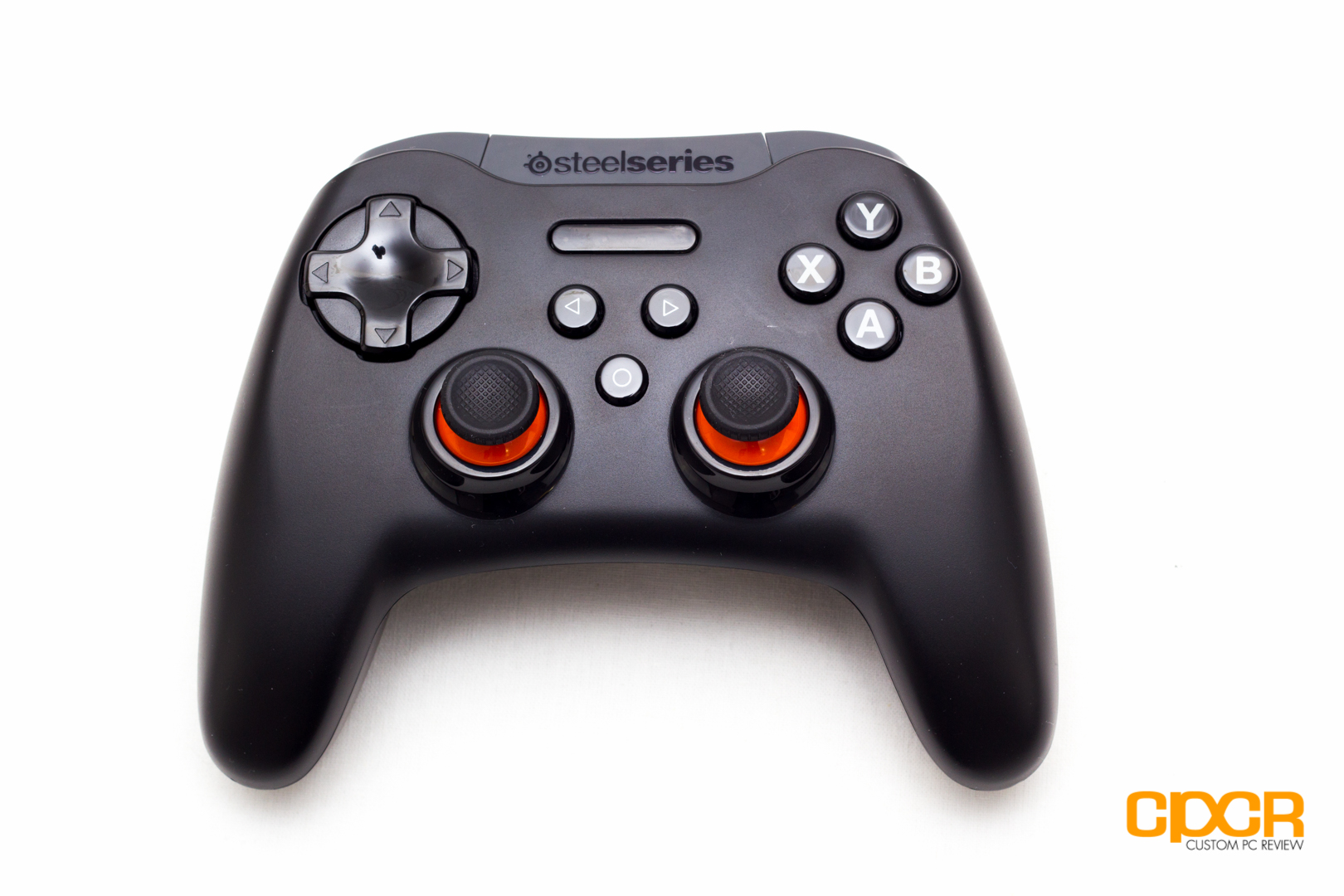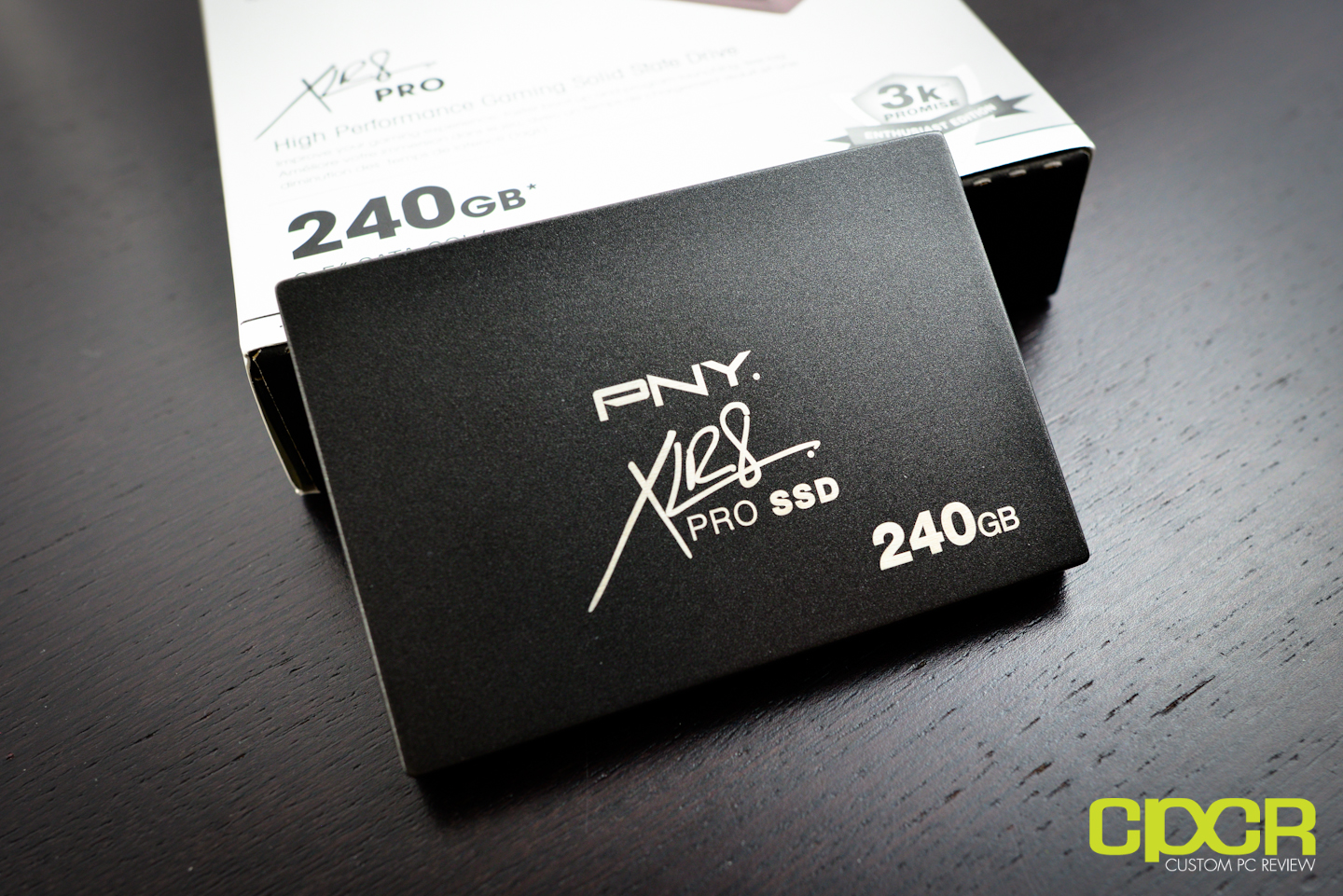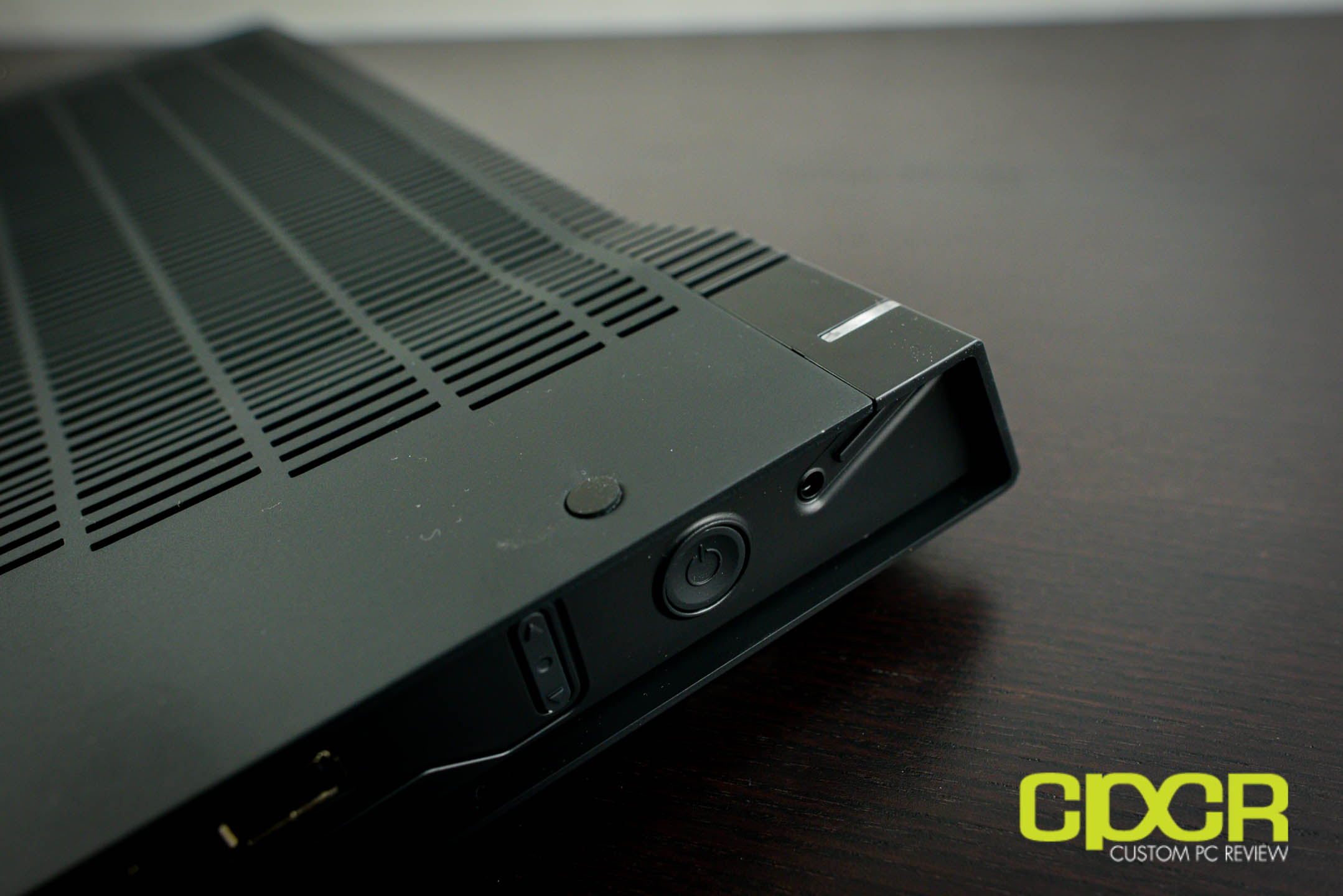[section label=1. Introduction]
Samsung Dominates… Again
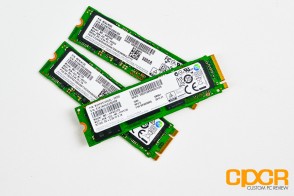 During last year’s Samsung SSD Global Summit, Samsung made some pretty big announcements. Among them was the introduction of 3D V-NAND to the consumer market and the introduction of the Samsung 850 PRO, but they also introduced some future products including an upcoming NVMe client SSD, the Samsung SM951.
During last year’s Samsung SSD Global Summit, Samsung made some pretty big announcements. Among them was the introduction of 3D V-NAND to the consumer market and the introduction of the Samsung 850 PRO, but they also introduced some future products including an upcoming NVMe client SSD, the Samsung SM951.
After the brief overview of the SM951 at the summit, we didn’t really hear much about the SSD until CES earlier this year when it became pretty clear that Lenovo’s new Thinkpad Carbon X1 would be one of the first ultraportables to begin using Samsung’s latest and greatest.
Unfortunately, this meant that if I wanted to test one of the new drives, I would probably have to purchase a new laptop, which wasn’t very likely. Fortunately, Samsung recently reached out to us to see if we were interested in checking out the new drive and it was an offer I couldn’t refuse.
Samsung SM951 512GB Specifications
| Manufacturer | Samsung | Samsung | Samsung |
|---|---|---|---|
| Model | SM951 | SM951 | SM951 |
| Model Number | MZHPV128HDGL-00000 | MZHPV256HDGL-00000 | MZHPV512HDGL-00000 |
| Form Factor | M.2 2280 | M.2 2280 | M.2 2280 |
| Capacity | 128GB | 256GB | 512GB |
| Controller | Samsung UBX (S4LN058A01) | Samsung UBX (S4LN058A01) | Samsung UBX (S4LN058A01) |
| NAND | Samsung 19nm Toggle Mode MLC | Samsung 19nm Toggle Mode MLC | Samsung 19nm Toggle Mode MLC |
| DRAM Cache | 256MB LPDDR2 | 512MB LPDDR2 | 512MB LPDDR2 |
| Sequential Reads | 2,000 MB/s | 2,150 MB/s | 2,150 MB/s |
| Sequential Writes | 600 MB/s | 1,200 MB/s | 1,500 MB/s |
| Interface | PCIe 3.0 x4 AHCI | PCIe 3.0 x4 AHCI | PCIe 3.0 x4 AHCI |
| Warranty | N/A | N/A | N/A |
The Samsung SM951 is only available to OEMs (system integrators, system builders, etc.) in capacities of 128GB, 256GB, and 512GB. The drives come in the M.2 2280 form factor and natively supports a PCIe Gen 3 x4 interface. Contrary to what was originally expected, the Samsung SM951 currently only supports the AHCI protocol although a NVMe version of the drive is expected down the line.
In terms of components, the Samsung SM951 uses Samsung’s in-house UBX controller which is a new controller used exclusively for the SM951. NAND onboard is Samsung’s last generation 19nm Toggle Mode MLC. While it’s disappointing to see that Samsung isn’t using their latest 3D V-NAND which is used in their flagship Samsung 850 PRO consumer drive, this doesn’t appear to hamper performance as the 512GB capacity drive is still rated at a blistering 2,150 MB/s sequential reads and 1,500 MB/s sequential writes. Samsung originally expected the drive to offer only 1,600/1,000 MB/s sequential reads/writes, so it appears that they’ve really over-delivered with this one.
Excited? You should be. Let’s take a closer look!
[section label=2. A Closer Look]
A Closer Look at the Samsung SM951 512GB
Since the Samsung SM951 isn’t being sold at retail, our sample contained just the bare drive by itself. Our 512GB model came in the M.2 2280 form factor with the M key edge connector (single notch).
The controller on the Samsung SM951 is the Samsung UBX controller with the model #S4LN058A01. Since this is an OEM only drive, very little is actually known about the controller, but it’s likely to be similar in design to the more familiar Samsung MDX controller except with a PCIe Gen 3 x4 interface rather than a SATA 6Gb/s interface.
Like the controller, specific information about the NAND onboard the Samsung SM951 is unknown as well. Samsung has confirmed that they are using 1xnm toggle mode NAND which is most likely the same 19nm product used in Samsung’s last generation drives. It’s a bit disappointing that Samsung didn’t opt to use their new 3D V-NAND, but seeing that the SM951 was designed for OEMs, it’s most likely a choice made due to the relatively lower cost of 19nm planar NAND and the more lengthy validation cycles OEM drives typically need to go through.
Additionally the SM951 also includes a 512MB LPDDR2 DRAM buffer making approximately 1MB DRAM buffer to 1GB drive capacity.
[section label=3. Testing Setup, Drive Info, Software]
Testing Setup
| System | CyberPowerPC Gamer Xtreme 4200 |
|---|---|
| CPU | Intel Core i7-4770K |
| Motherboard | ASUS Z87-A |
| Memory | Kingston HyperX Genesis 16GB DDR3 2133MHz |
| Graphics | Intel HD4600 Graphics |
| Storage | OCZ Vertex 4 256GB |
| Power Supply | Corsair HX650 |
| Case | HSPC High Speed Tech Station |
| Optical Drive | ASUS OEM DVD Drive |
| Operating System | Windows 8 64 bit & CentOS 6.4 |
Special thanks to CyberPowerPC, Kingston, OCZ Storage Solutions and HSPC for sponsoring our test bench!
SanDisk M.2 to PCIe x4 Adapter
We’d also like to thank SanDisk for providing us with a M.2 to PCIe x4 adapter for testing.
Crystal Disk Info
Samsung SM951 512GB
Today we’ll be reviewing the Samsung SM951 512GB with the firmware BXW2500Q. Since these drives are designed for OEM, it’s possible that performance will vary depending on the OEM’s specific implementation.
As far as I know, all Samsung SM951 drives available on the market today use the AHCI protocol which should be both plug and play, and bootable without any additional drivers. Some motherboards however may require a firmware update, others may require UEFI installation, and some may require both so your mileage may vary. Samsung is expected to launch a SM951 which utilizes the NVMe protocol in the future, which may further complicate booting from the drive, but details on that drive is still unavailable at this time.
[section label=4. ATTO Disk Benchmark / AS SSD / Crystal Disk Mark]
Samsung SM951 512GB Performance
ATTO Disk Benchmark v2.46
ATTO Disk Benchmark is one of the industry’s oldest and most popular benchmarks for testing disk read/write speeds. This benchmarks allows read and write testing using predefined block sizes and gives us a good idea of read/write speeds with different sized files. Most SSD manufacturers prefer using this benchmark when advertising SSDs as it tests using compressible data, which tends to yield best performance.
Performance Analysis
Kicking off with ATTO Disk Benchmark, the Samsung SM951 easily exceeds its specifications with performance coming in at a blazing 2.26GB/s sequential reads and 1.59GB/s sequential writes. This level of performance also ranks the Samsung SM951 as one of the fastest drives we’ve ever tested.
AS SSD Benchmark
AS SSD is a very commonly used benchmark used to measure SSD performance in sequential, 4K, 4K QD64 and latency. Tests are run using 100% incompressible data. AS SSD also outputs a final score at the conclusion of the test based off the overall performance of the drive.
Additionally, we also run AS SSD’s included compression benchmark which tests the drive using data of varying compressibility. Some SSDs such as SandForce based SSDs tend to perform significantly better when the data is compressible.
Performance Analysis
AS SSD performance is no less impressive as the performance we measured in ATTO Disk Benchmark. Sequential reads topped the 1.9GB/s mark and sequential writes came in just shy of 1.5GB/s. While we don’t normally compare AS SSD scores as there are far better metrics of performance, AS SSD does throw out a score of 2015, which is one of the highest we’ve seen.
Crystal Disk Mark 3.0.1 x64
Crystal Disk Mark is another popular benchmark which allows us to measure both sequential read/write speeds as well as random read/write speeds. With this benchmark, tests can be run using both random fill (incompressible data) and 0 fill (compressible data). Realistically in typical computer usage scenarios, data being transferred will consist of a mixture of both incompressible and compressible data.
Performance Analysis
Again, excellent performance on Crystal Disk Mark as well. It does appear that the Samsung SM951 only begins to significantly take advantage of its high performance interface when dealing with larger filesizes or higher queue depths. Here we can see that major performance benefits versus SATA SSDs occur in sequential, 512K, and 4K QD32 datasets.
[section label=5. PC Mark 7 / PC Mark 8]
Samsung SM951 512GB Performance
PC Mark 7 Storage Benchmark
The PC Mark 7 storage benchmark is a trace based benchmark that evaluates the SSD under many different real world environments such as gaming, multimedia editing, etc. PC Mark 7 uses a relatively light workload, which represents a typical mainstream client storage sub-system workload.
Performance Analysis
In PC Mark 7, the Samsung SM951 is simply hands down the fastest consumer SSD we’ve encountered by a significant margin.
PC Mark 8 Expanded Storage Benchmark
With the introduction of PC Mark 8 2.0.228, Futuremark added the option for an Expanded Storage Benchmark which is literally designed to bring any storage system its absolute limits. The new PC Mark 8 Expanded Storage Benchmark takes around 24 hours to run and for our purposes, we’ll be using the consistency test which measures performance consistency, degradation tendency, and recovery speed of a storage system.
Consistency Test
Full details on the consistency test can be found in the PC Mark 8 Technical Guide here. For the more simplified version, the test is basically a near 24 hour, five phase benchmark – three of which we’ll be reporting on in our results below.
- Phase 1 is a precondition phase designed to “dirty” the drive with random data. The entire drive is filled twice to the capacity of the drive.
- Phase 2 is a degrade phase where the drive is hammered with tons of random data followed by a performance test run. This is done 8 times.
- Phase 3 is the steady state phase where the drive is once again hammered with tons of random data followed by a performance test run. This is done 5 times.
- Phase 4 is the recovery phase where the drive is given 5 minutes to rest followed by a performance test run. This is done 5 times.
- Phase 5 is the clean up phase where the drive is simply secure erased.
Performance Analysis
While some SSDs perform best in lighter workloads and some in heavier workloads, the Samsung SM951 appears to perform extremely well in both. In the punishing PC Mark 8 Expanded Storage Benchmark, the Samsung SM951 easily surpasses the Samsung 850 PRO, the current fastest consumer SATA SSD, by a wide margin.
[section label=6. FIO – FOB]
Samsung SM951 512GB Performance
FIO (Flexible I/O Tester)
FIO, which stands for Flexible I/O Tester, is basically what its name says – a flexible I/O tester / I/O workload generator. Whereas all the benchmarking tools we’ve used previously are fantastic, easy to use benchmarking tools that provide a good snapshot of SSD performance, they do lack a lot of versatility, especially for more complex and in-depth operations such as custom queue depths, block sizes, test run times, etc. While the testing that follows may not pertain to typical consumer usage, they do help give us a much more in-depth look at each individual product’s strengths and weaknesses when they’re pushed to the limits.
FIO – FOB (Fresh Out of the Box) Testing
When SSDs are brand new and Fresh Out of the Box, they’re generally able to perform at or outperform their advertised speeds, but unlike traditional hard drives, performance on SSDs begin to degrade over time as they become more and more used. This is because while SSDs are new, all bits on the SSD are empty, so they can instantly be programmed with data. However, once data gets programmed in, even if it’s deleted in the filesystem the actual data will still stay programmed on the NAND itself unless some sort of garbage collection routine comes in to wipe the data. Unfortunately, in order to write new data onto “dirty” NAND, the NAND first needs to go through an erase cycle to erase the old data before a program cycle can happen to program new data, which as you may imagine takes more time than just a simple program cycle. As this only happens when writing new data onto the SSD, you’ll generally see less performance degradation on reads and more performance degradation on writes.
For our FOB testing, we run a secure erase on the SSD then run each test sans any preconditioning. This will provide us with the highest level of performance the SSD is capable of and is likely never to be seen ever again once the SSD goes into a used state.
Our testing will include 4K read testing, 4K write testing, and 4K 70/30 read/write mix testing at queue depths of 1,2,4,8,16,32,64,128,256. The reason we’ve also included 4K 70/30 read/write mix testing is simply because most real world workloads will always fall somewhere between 0% write and 100% write rather than one or the other. Since client usage is much more read heavy, we’ll be using the 70/30 read/write mix.
For general client usage, performance will fall somewhere between queue depths of 1-4 whereas servers and other enterprise applications will easily see queue depths of 32 or greater.
Performance Analysis
Fresh out of the box, 4K performance out of the Samsung SM951 is once again fantastic. 4K random reads reached 181,000 IOPS, 4K random writes reached 102,000 IOPS, and most impressively 4K random 70%/30% read/write mixed workloads reached up to 181,000 IOPS as well.
Despite top notch performance, the Plextor M6e Black Edition and the Kingston HyperX Predator were able to slightly edge out the Samsung SM951 in 4K random writes and the OCZ RevoDrive 350 was able to edge out the Samsung SM951 in 4K random reads. That said, the Samsung SM951 was without a doubt the best performing drive in mixed workloads significantly outperforming its competition by a wide margin.
[section label=7. FIO – Steady State]
Samsung SM951 512GB Performance
FIO – Steady State Testing
After prolonged use of an SSD, it will reach “steady state” where performance levels off to a minimum level. The FOB state is the “best case scenario” for SSD performance while “steady state” is going to be your worst. Here, we ran the exact same set of benchmarks we just completed in the FOB state; except this time around, we’ll be preconditioning the drive by filling 100% of the drive’s LBAs with two sequential passes of 128k data followed by hammering the drive for six hours with 4K random data prior to actual testing.
Performance Analysis
As expected, steady state performance on the Samsung SM951 was relatively good as well. In testing, the Samsung SM951 was able to pull 180,000 IOPS 4K random reads which is a relatively minor performance difference compared to the drive in the FOB state. 4K random write performance however, does take a significant performance hit, dropping to 11,000 IOPS which is slightly under the performance we recently saw from the Kingston HyperX Predator. Mixed workload performance is once again impressive significantly outperforming all competitors except the OCZ RevoDrive 350 at higher queue depths.
[section label=8. FIO – 4K Random Write Consistency]
Samsung SM951 512GB Performance
FIO 4K Random Write Consistency Testing
Another one of the benefits of testing with FIO is the flexibility of running consistency tests, which is one of the most important metrics when considering SSDs going forward. Looking at the results of our benchmarks such as ATTO Disk Benchmark and Crystal Disk Benchmark, we can see that practically every top tier SSD is capable of saturating SATA 6Gb/s in the FOB state. However, what really differentiates these SSDs is their ability to hold a certain level of performance even after extended periods of use.
For our consistency testing, we used a fairly standard method, which includes both filling up 75% of capacity as well as 100% capacity twice with sequential 128k data followed by the actual test itself, which is simply running 4K random writes at a queue depth of 32. By recording the IOPS every second for 2,000 seconds, we’re able to get a good look at what kind of performance can be expected when the drive is relatively new, when it’s heading towards steady state, and when it’s actually in steady state.
[tabgroup]
[/tabgroup]Performance Analysis
4K random write consistency at 75% and 100% fill are quite good for a consumer drive although it’s not as good as we’ve seen from the Samsung 850 PRO.
[section label=9. FIO – 4K Random Write Latency]
Samsung SM951 512GB Performance
FIO 4K Random Write Latency Testing
Another metric that’s becoming increasingly important in SSDs is its ability to keep latency low despite being subjected to a heavy workload. Even if a SSD were capable of ultra high and ultra consistent IOPS performance, if latency were high, users would still feel that the drive is slow. Ideally, SATA SSDs should always be capable of latencies under 50ms, even during heavy workloads.
For latency testing, we’ll be using the exact same testing parameters as IOPS consistency testing, except instead of recording IOPS every second, we’ll be recording latency.
[tabgroup]
[/tabgroup]Performance Analysis
Latency doesn’t appear to be an issue with the Samsung SM951. Latency is kept well below 50ms with most requests served under 10ms.
[section label=10. FIO – 128K Random Write]
Samsung SM951 512GB Performance
FIO 128K Random Write Consistency Testing
In addition to testing 4K random write consistency, we’ll also test for 128K random write consistency to see how well a SSD is able to hold itself to a level of performance when getting hammered with larger file transfers.
Testing methodology is very similar to our testing for 4K random write consistency. We use a fairly standard method, which includes both filling up 75% of capacity as well as 100% capacity twice with sequential 128k data followed by the actual test itself, which is running 128K random writes at a queue depth of 32. By recording the IOPS every second for 2,000 seconds, we’re able to get a good look at what kind of performance can be expected when the drive is relatively new, when it’s heading towards steady state, and when it’s actually in steady state.
[tabgroup]
[/tabgroup]Performance Analysis
Similar to 4K random writes, 128K random writes were relatively consistent for a consumer drive, but still outpaced by the Samsung 850 PRO.
[section label=11. Conclusion]
Samsung SM951 512GB Conclusions
 When I first received the Samsung SM951, I knew the drive would be pretty fast, but I had no idea what to expect. On one hand I knew that Samsung had upgraded the interface on the drive while on the other hand I also knew that Samsung decided to stick to the AHCI protocol and 1xnm planar NAND. Since I was originally expecting to see V-NAND and NVMe on the SM951, it was quite a letdown to find that this wasn’t the case.
When I first received the Samsung SM951, I knew the drive would be pretty fast, but I had no idea what to expect. On one hand I knew that Samsung had upgraded the interface on the drive while on the other hand I also knew that Samsung decided to stick to the AHCI protocol and 1xnm planar NAND. Since I was originally expecting to see V-NAND and NVMe on the SM951, it was quite a letdown to find that this wasn’t the case.
That being said, as soon as I started testing the drive, it was quite apparent that even without NVMe or V-NAND, the SM951 easily dominates everything on the market. Performance on the Samsung SM951 is simply unmatched by any consumer drive we’ve reviewed previously. Even among the latest M.2 PCIe SSDs, the Samsung SM951 significantly outpaces its competitors by a wide margin in nearly all performance areas. Furthermore, what really sets the Samsung SM951 apart is that it’s not only capable of high burst performance, but it’s also the first M.2 PCIe SSD we’ve come across that can perform extremely well under heavy, sustained loads. This is especially apparent in the PC Mark 8 Expanded Storage Benchmark where the SM951 was able to surpass both the Plextor M6e Black Edition and the Kingston HyperX Predator with ease.
| Manufacturer | Samsung | Samsung | Samsung |
|---|---|---|---|
| Model | SM951 | SM951 | SM951 |
| SKU | MZHPV128HDGL-00000 | MZHPV256HDGL-00000 | MZHPV512HDGL-00000 |
| Capacity | 128 GB | 256 GB | 512 GB |
| Street Price | $169.99 | $244.99 | $474.95 |
| Price/GB | ~$1.33 | ~$0.96 | ~$0.93 |
| Check Price | Click Here | Click Here |
Although not technically supposed to be available for retail, the Samsung SM951 has been showing up at various online retailers. With a quick search on Amazon, we were able to find the 512GB drive for ~$494.99 which comes in at just under $1/GB. Similarly, the 256GB drive and the 128GB drive were available as well for $244.99 and $169.99 respectively. This makes the Samsung SM951 one of the most expensive client SSDs on the market, but keep in mind the retailers selling these drives do so unofficially and are likely pricing the drives according to what customers are willing to pay.
Overall I’m thoroughly impressed with the Samsung SM951 and if you can afford it, the Samsung SM951 easily takes the crown as the best client SSD currently on the market. That said, what I’m really excited to see now is what’s coming down the pipeline. If Samsung is able to extract this much performance out of their last generation planar NAND, there’s really no telling what we could see in PCIe drive equipped with V-NAND and native NVMe support.
 Sample provided by: Samsung Semiconductor
Sample provided by: Samsung Semiconductor
Availability: Amazon

